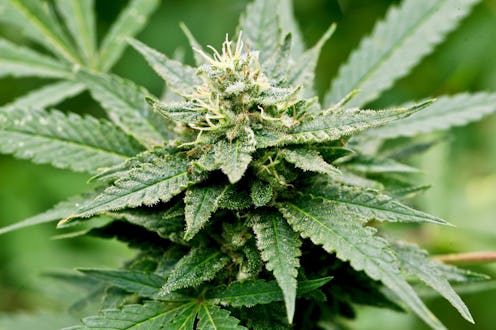Life
Science Figured Out The Average Size Of This
If you've ever wondered what the standard size of a joint is, I have good news! Science has determined how big a joint is on average — and it turns out that it's actually much smaller than people used to assume. Just goes to show why we need science, right? Even when it comes to something as seemingly random as the amount of marijuana in your average joint, as long as you're somewhere it's legal.
Until now there hasn't been much consensus, either among marijuana experts or law enforcement officers, about what constitutes standard joint size. And it seems many estimates tended to be a lot higher than the number researchers have come up with. For instance, a 2014 White House report estimated the average joint size based on pricing data; the report reasoned that since the average price of a joint was about half the average price of a gram of loose marijuana, that the average joint was about half a gram.
Researchers at the University of Pennsylvania, however, went about things a little differently in a new study. Analyzing data from the U.S. Justice Department’s Arrestee Drug Abuse Monitoring program, in which arrestees provide information about illegal substance use and the drug market, they developed a statistical model that didn't just look at average prices, but also included other factors that affect marijuana pricing across the country, such as shipping costs and bulk discounts from distributors. They found that the average joint is actually only 0.32 grams, or roughly one third of a gram — about 0.18 grams less than what the 2014 White House report estimated.
That difference in size, though it might not seem important, has implications for law enforcement and marijuana-related public policy. So while researching the size of a joint might seem random, it's actually an important bit of information.
"It turns out to be a critical number in estimating how much marijuana is being consumed [nationwide], how much [marijuana] drug-trafficking organizations are putting on the market, and how much states might expect in revenue post-legalization," said study co-author Greg Ridgeway, an associate professor of criminology and statistics at the University of Pennsylvania, in a statement.
In other words, it's important to be informed.
As more and more states begin legalizing recreational marijuana, the lack of standardization has been an issue for both law enforcement and regulators. This most frequently becomes an issue with edibles, which can vary widely in their THC content, but it's also a wider issue. After all, it's hard for government officials to pass laws or craft policies around marijuana if products and practices vary so widely, and if there isn't much information about what's common. Knowing the average size of a joint actually turns out to be really useful to anyone trying to get a sense of what marijuana use looks like and how best to monitor and regulate it.
So can we expect even more exciting pot-related news from the University of Pennsylvania? Sadly, probably not. Rideway says he doesn't plan to keep looking into marijuana issues. “I’m a statistician,” he explained. “I think about statistical models and data analysis. I find datasets to answer difficult questions."
Which I guess goes to show even marijuana must bow to the awesome power of math. Science really can come up with an answer to anything, can't it?
Image: Giphy
